- Sushmita Sadhukha
- Junior Lab Associate
- Crowdsourcing Neuroscience: An Interactive Cloud-based Citizen Science Platform for High School Students, Teachers, and Researchers
- https://mindhive.science/
- New York University
- Engin Bumbacher
- Professor of Education Technology
- Crowdsourcing Neuroscience: An Interactive Cloud-based Citizen Science Platform for High School Students, Teachers, and Researchers
- https://mindhive.science/
- Teacher University Vaud
- Kim Burgas
- Independent consultant
- Crowdsourcing Neuroscience: An Interactive Cloud-based Citizen Science Platform for High School Students, Teachers, and Researchers
- https://mindhive.science/
- New York University
- Suzanne Dikker
- Senior Research Scientist
- Crowdsourcing Neuroscience: An Interactive Cloud-based Citizen Science Platform for High School Students, Teachers, and Researchers
- https://mindhive.science/
- New York University
- Rebecca Martin
- https://www.cns.nyu.edu/~rmartin/
- Postdoctoral Fellow
- Crowdsourcing Neuroscience: An Interactive Cloud-based Citizen Science Platform for High School Students, Teachers, and Researchers
- https://mindhive.science/
- New York University
- Camillia Matuk
- https://steinhardt.nyu.edu/people/camillia-matuk
- Assistant Professor
- Crowdsourcing Neuroscience: An Interactive Cloud-based Citizen Science Platform for High School Students, Teachers, and Researchers
- https://mindhive.science/
- New York University
- Yury Shevchenko
- https://yuryshevchenko.com/about
- Post-doc
- Crowdsourcing Neuroscience: An Interactive Cloud-based Citizen Science Platform for High School Students, Teachers, and Researchers
- https://mindhive.science/
- University of Konstanz
- Veena Vasudevan
- Postdoctoral Associate
- Crowdsourcing Neuroscience: An Interactive Cloud-based Citizen Science Platform for High School Students, Teachers, and Researchers
- https://mindhive.science/
- New York University
Public Discussion
Continue the discussion of this presentation on the Multiplex. Go to Multiplex








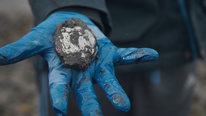
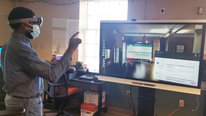
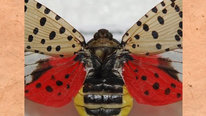
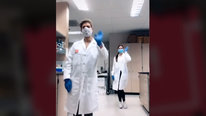
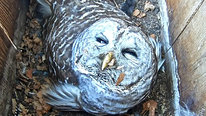

Kirstin Milks
Science Teacher
Hi MindHive team and collaborators! Your presentation has a particularly strong framing on making the relationship between scientists and the public non-hierarchical, which is an important focus for me as a high school science teacher. I'm intrigued by the scaffolding you describe in which students first participate in a scientist-initiated study, then design their own studies, which then inform scientists' own studies. I also appreciate the critical lens development possible when students are asked to design studies based on the topics you offer -- connections between Covid-19 and stress, personality, mob mentality, and Zoom/mental health are rich places to think about power and policy within the context of science class.
I'm hoping you'll be able to describe the third part of your work. What kind(s) of information are used by the student investigations to guide next research steps? How is student work incorporated back into science? My students and I have participated in some learning experiences that, while quite cool, didn't ask students to do the work of developing their reasoning or analytic skills, so I'm also curious about what scaffolding is in place for students to be able to develop those in the second phase of their experience.
Sushmita Sadhukha
Junior Lab Associate
Hi Kirstin, thanks so much for your comment! Our goals for MindHive are two-fold: first, we want students to have an authentic research experience and second, we would like for these research experiences to be contributions to the overall scientific community. After students formulate their own research questions and design their studies after participating in scientist-initiated studies, their studies are closely reviewed by the MindHive team before students go on to collect their own data from peers in their own class as well as across schools. Data and insights from these student projects help researchers identify and formulate questions that are yet to be investigated, made apparent through this citizen science process.
With respect to how student work is incorporated back into the science: building on last year’s studies, we at NYU developed the study https://mindhive.science/studies/covid, asking exactly the questions that students were interested in (e.g., “Does personality affect your experience in remote learning?”). We’re currently in the process of collecting and analyzing the data.
About guiding students in their own research and analytical skills, we try to scaffold iterative research skills in the following ways: Every scientist-initiated study on MindHive is paired with a lesson around research design and reasoning, as well as embedded assessments where students are asked to reflect on possible follow-up questions. They note these questions in their journal and then by the time they get to designing their own study, the first step in the proposal process is “Brainstorming” where they collect all their questions and ideas that have come up throughout the curriculum thus far. In addition, the platform encourages students to ‘clone’ research projects: they can literally create copies of existing research studies and . Finally, we have built in a lot of tasks and surveys that students can mix and match together using a block-based design to ask new questions using ‘old’ tasks.
Kirstin Milks
Sarah Haavind
Senior Research Project Manager
Sushmita! Very relevant project given, as you say,, how clearly the distrust of science and scientists has affected our collective response to the pandemic. I'm curious especially about the student initiated studies. How did the students figure out what made a good study design and then how did they get their data?
Looking forward to learning more about how your platform works!
Sushmita Sadhukha
Junior Lab Associate
Hi Sarah! Thanks so much for watching our video and commenting. Yes, our student initiated studies -- great question. Before students embark on this journey of creating their own studies, we implement a curriculum (the length of which varies slightly across classes depending on how much time teachers have) in their classes that includes materials on how to formulate questions about human behavior that are generalizable, fast vs. rigorous science, what makes good experimental design, etc. Students also learn about and participate in several scientist-initiated studies on the platform before creating their own, which allows them to observe what kinds of questions can be asked, and how these questions can be testable using different kinds of tasks and surveys. We are currently building in a component that allows students to quickly analyze, visualize, and interpret their data as well.
Sarah Haavind
Kirstin Milks
Rosio Bugarin Pedroso
Principal
Sushmita, I am inspired by your project and agree that science has often been a one-way street. I am interested to know how the project made research findings more transparent. What kinds of interactions or communications did you promote as research findings came to light and what kind of impact did it have on those who participated and or the general public?
Looking forward to your response.
Suzanne Dikker
Senior Research Scientist
hi Rosio,
Thanks so much for your kind words and great question! We don't the answer to it yet, as we are unfortunately only just now starting to work on data analysis and communication... to be continued.
Rachael Mady
Very cool to see how MindHive can be used in different contexts. I'm really curious about the community-scientist partnership in Brownsville--how has it gone? What are the highlights and were there any challenges? Also, on the slide it mentions that the partnership is an Equity Project and I'd love to hear more about that too. Thanks!
Suzanne Dikker
Senior Research Scientist
hi Rachael,
really happy to know you liked this! we are in the middle of our first data collection round for Brownsville so we don't have any specific answer for you yet in terms of outcomes.
During the process of development, a highlight was definitely working with community representatives in learning what THEY thought was important to their community. A challenge was recruitment, especially since in-person recruitment was important.
here's the link to the NGO we're working with: https://www.publicsentiment.org/brownsville/
Lauren Goff
What a timely and essential study, especially in today's climate. I am interested to learn more about framing the relationship between the public and scientists as non-hierarchical- looking forward to learning more about this!
Suzanne Dikker
Senior Research Scientist
thanks for the encouraging remarks!
Saira Mortier
Very cool! Is the platform freely available to view? I could certainly see a potential collaboration between us given how well our goals seems to align. We are a citizen science game that uses crowdsourcing to trace neurons for labs all over! Check us out and if you want to discuss, please feel free to email me at smortier@cs.washington.edu.
Suzanne Dikker
Senior Research Scientist
i just saw your project: love it!
Kirstin Milks
Science Teacher
Circling back to say I am still thinking hard about this project and your stance. I've been hesitant to try to figure out how to scaffold AP Biology (the course for which I create/set curriculum) around citizen science -- but I think it is time to try :)
Suzanne Dikker
Senior Research Scientist
hi Kirstin,
We are actually working with an AP bio teacher as well as a molecular biology teacher. Happy to discuss more if you like! suzanne.dikker@nyu.edu
Miyoko Chu
Neat way to enable collaboration between students and scientists
Suzanne Dikker
Senior Research Scientist
thank you :)